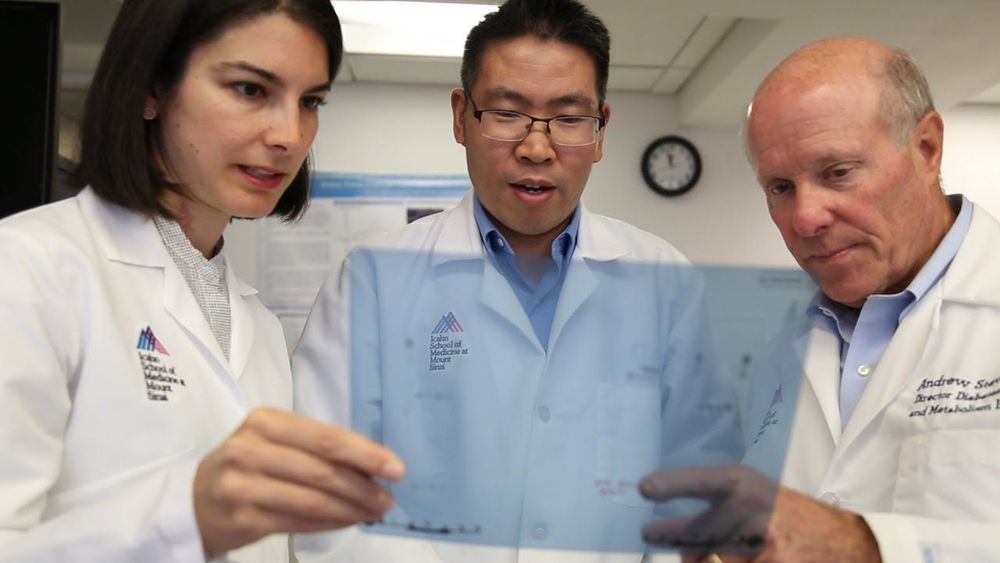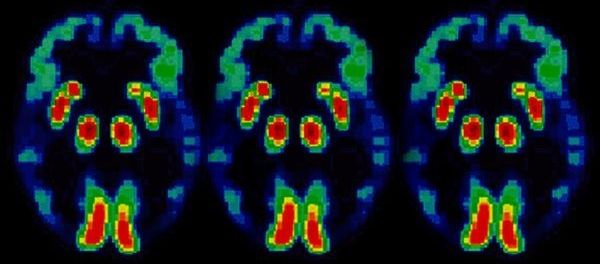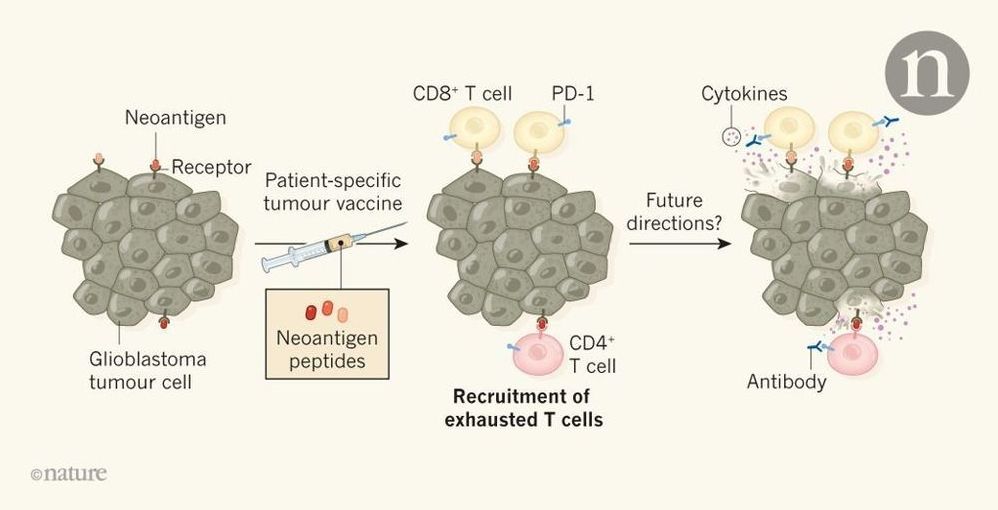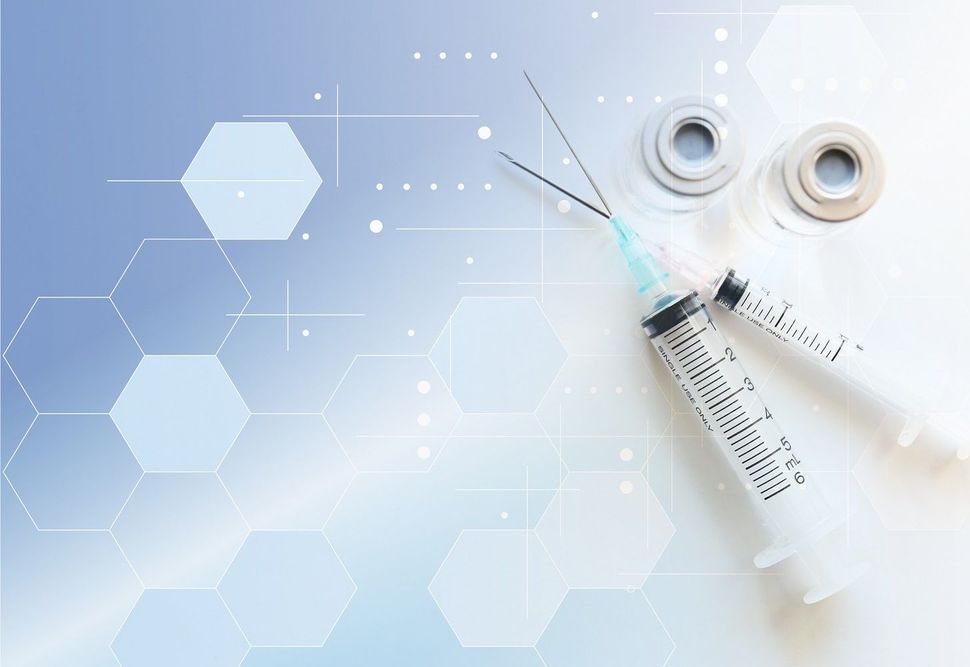Archive for the ‘biotech/medical’ category: Page 2203
Jan 7, 2019
CES 2019: Scientists have developed a blood pressure monitoring app to replace the 100-year-old cuff
Posted by Genevieve Klien in categories: biotech/medical, mobile phones
Startup Biospectal could help 1.6 billion people suffering from hypertension by using a smartphone and an app to check for high blood pressure.
- by
- Shelby Brown
Jan 7, 2019
Bill Gates warns that nobody is paying attention to this state-of-the-art scientific technology that could make inequality even worse
Posted by Genevieve Klien in categories: bioengineering, biotech/medical
Gene editing is one of the most promising new approaches to treating human diseases today.
It also raises “enormous” ethical questions, Bill Gates recently warned, and “could make inequity worse, especially if it is available only for wealthy people.”
“I am surprised that these issues haven’t generated more attention from the general public,” he said in a December blog post, adding that “this might be the most important public debate we haven’t been having widely enough.”
Jan 7, 2019
Triple-negative breast cancer responds to new dual-target therapy
Posted by Genevieve Klien in category: biotech/medical
An experimental therapy that targets two growth pathways reduced cancer cell proliferation and spread in mice with triple-negative breast cancer.
Jan 7, 2019
New Drug Trial Could Halt Alzheimer’s Memory Loss
Posted by Genevieve Klien in categories: biotech/medical, neuroscience
Jan 7, 2019
Scientists could engineer a spicy tomato. Is it worth it?
Posted by Genevieve Klien in categories: bioengineering, biotech/medical, food, genetics
Spicy food is popular the world over, but the active ingredient that makes food taste “hot”—capsaicinoids, a group of chemical compounds has useful properties beyond making food taste delicious. However, the plants that make them (the chili pepper family, or Capsicum) are small and have relatively low yields. A new paper published today in the journal Trends in Plant Science proposes an alternative: engineering tomato plants to produce capsaicinoids. If all goes well, someday, you could enjoy a spicy tomato, or even be treated with capsaicinoids extracted from one.
The paper, written by a group at Brazil’s Federal University of Viçosa, builds on recent work that showed the tomato has all the genetic information it needs to produce capsaicinoids. “We know that all the genes are there, but in the tomato they are silent,” study author Agustin Zsӧgӧn says. His paper proposes a method for using gene-editing techniques to activate the genetic machinery in the tomato that tells it how to produce capsaicinoids, transforming the plant into both a “biofactory” that could produce larger amounts of the chemicals than it’s currently possible to grow and a spicy snack.
Tomatoes have capsaicinoid genetic pathways like peppers because the two South American plants are related. “In our lab, we work with both species,” Zsӧgӧn says. Last year, his team used gene editing to “domesticate” a wild tomato in just a few generations, engineering the strain to produce larger fruit, and greater quantities of it, than in the wild. This kind of process is how we ended up with the crops we eat today—early farmers planted the offspring of the most fruitful plants of each generation, enabling their genetic survival. CRISPR-Cas9 is just a shortcut.
Jan 7, 2019
Intraoperative detection of blood vessels with an imaging needle during neurosurgery in humans
Posted by James Christian Smith in categories: biotech/medical, neuroscience
Intracranial hemorrhage can be a devastating complication associated with needle biopsies of the brain. Hemorrhage can occur to vessels located adjacent to the biopsy needle as tissue is aspirated into the needle and removed. No intraoperative technology exists to reliably identify blood vessels that are at risk of damage. To address this problem, we developed an “imaging needle” that can visualize nearby blood vessels in real time. The imaging needle contains a miniaturized optical coherence tomography probe that allows differentiation of blood flow and tissue. In 11 patients, we were able to intraoperatively detect blood vessels (diameter, 500 μm) with a sensitivity of 91.2% and a specificity of 97.7%. This is the first reported use of an optical coherence tomography needle probe in human brain in vivo. These results suggest that imaging needles may serve as a valuable tool in a range of neurosurgical needle interventions.
Stereotactic brain biopsies are a minimally invasive procedure used to obtain samples of intracranial tissue for diagnostic purposes, most commonly related to brain tumors. Approximately 80,000 new cases of primary brain tumor are diagnosed, and 14,000 brain biopsies are performed each year in the United States (1, 2). Hemorrhage is the most frequent and devastating complication associated with this procedure. Perioperative hemorrhage is associated with rates of transient and permanent morbidity of 1.7 to 8.5% and 1.4 to 4.8%, respectively, and mortality rates of 0.6 to 2.8% (3–7).
The standard clinical practice is to identify blood vessels at risk of injury on preoperative imaging, using either contrast-enhanced magnetic resonance imaging (MRI) or x-ray computed tomography. Frameless stereotactic navigation techniques, guided by preoperative imaging, are then used to direct the biopsy needle trajectory to sample the target lesion, while avoiding vasculature or eloquent brain tissue (8).
Jan 7, 2019
Researchers discover new drug cocktail that increases human beta cell proliferation at rapid rates
Posted by James Christian Smith in category: biotech/medical

#EndOfDiabetes
Researchers at the Icahn School of Medicine at Mount Sinai have discovered a novel combination of two classes of drugs that induces the highest rate of proliferation ever observed in adult human beta cells—the cells in the pancreas that produce insulin. The result is an important step toward a diabetes treatment that restores the body’s ability to produce insulin.
Jan 7, 2019
Immune cells track hard-to-target brain tumours
Posted by James Christian Smith in categories: biotech/medical, neuroscience
Two Nature papers show that it is possible to make T cells that target some of the few neoantigens expressed by glioblastomas and that T- cell responses can be boosted in cancers. This News & Views discusses the findings.
Clinical trials reveal that personalized vaccines can boost immune-cell responses to brain tumours that don’t usually respond to immunotherapy. The findings also point to how to improve such treatments. Personalized vaccines boost immune responses targeting brain tumours.
Jan 7, 2019
New Gene Therapy for Vision Loss Proven Safe in Humans
Posted by James Christian Smith in categories: biotech/medical, life extension
In a small and preliminary clinical trial, Johns Hopkins researchers and their collaborators have shown that an experimental gene therapy that uses viruses to introduce a therapeutic gene into the eye is safe and that it may be effective in preserving the vision of people with wet age-related macular degeneration (AMD). AMD is a leading cause of vision loss in the U.S., affecting an estimated 1.6 million Americans. The disease is marked by growth of abnormal blood vessels that leak fluid into the central portion of the retina called the macula, which we use for reading, driving and recognizing faces.
The study published on May 16 in The Lancet, reports an exciting new approach in which a virus, similar to the common cold, but altered in the lab so that it is unable to cause disease, is used as a carrier for a gene and is injected into the eye. The virus penetrates retinal cells and deposits a gene, which turns the cells into factories for productions of a therapeutic protein, called sFLT01.
The abnormal blood vessels that cause wet AMD grow because patients have increased production of vascular endothelial growth factor (VEGF) in their retinas. Current treatments require injections of proteins directly into the eye that bind and inactivate VEGF, reducing fluid in the macula and improving vision. However, the therapeutic proteins exit the eye over the course of a month, so patients with wet AMD usually need to return to the clinic for more injections every six to eight weeks in order to stave off vision loss. Eye specialists say the burden and discomfort of the regimen is responsible for many patients not getting injections as frequently as they need, causing vision loss.
Continue reading “New Gene Therapy for Vision Loss Proven Safe in Humans” »
















